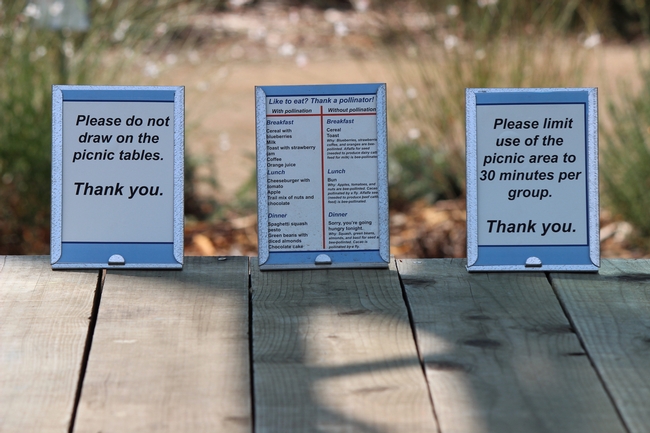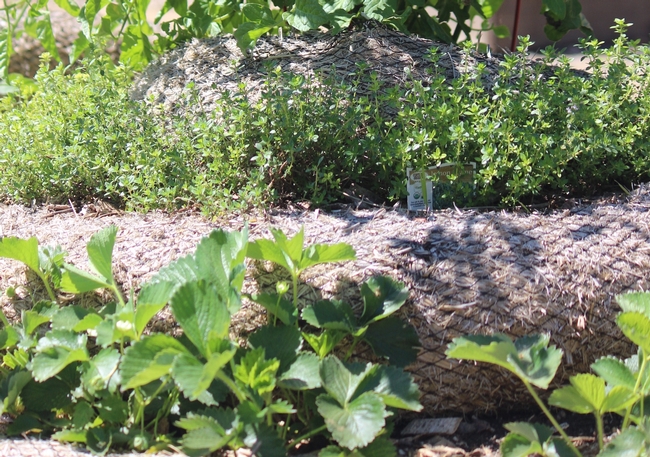- Author: Christine Casey
The Haven volunteers and I are busy doing winter pruning. I'm often asked about pruning by garden visitors: what to prune, when to do it, and how much to cut back. We prune most of our plants fairly hard to stimulate as much new growth as possible since new growth often produces more flowers. After all, making flowers to feed the bees is what we're all about!
We perform this task every year in late January and into early February. We delay pruning until then to provide forage and cover for the many birds that use the Haven and to ensure that any frost damage is confined to the outer part of the plant. Here's how we prune different types of plants at the Haven.
Herbaceous perennials
These plants are typically cut back to the base, although in the case of plants like milkweed that are late to re-sprout, it can be helpful to leave visible stems so you'll remember where the plant is located. Some examples from the Haven:
The first photo shows calamint, Calamintha nepetoides, just before pruning. You can clearly see last year's dead flower stalks with this year's new growth at the base. Cut the old stalk down to the top of the new growth.
The next picture is sedum 'Autumn Joy', Hylotelephium 'Autumn Joy' just after pruning. Isn't the new growth cute? It looks like tiny heads of lettuce! I prune this plant earlier -- in late fall or early winter -- as the hollow stems make great overwintering sites for beneficial insects like ladybird beetles.
The final example is 'Walker's Low' catmint, Nepeta x faassenii 'Walker's Low'. No need to be gentle with this plant; we prune ours with electric hedge trimmers. The photos show the same patch of plants before and after pruning. 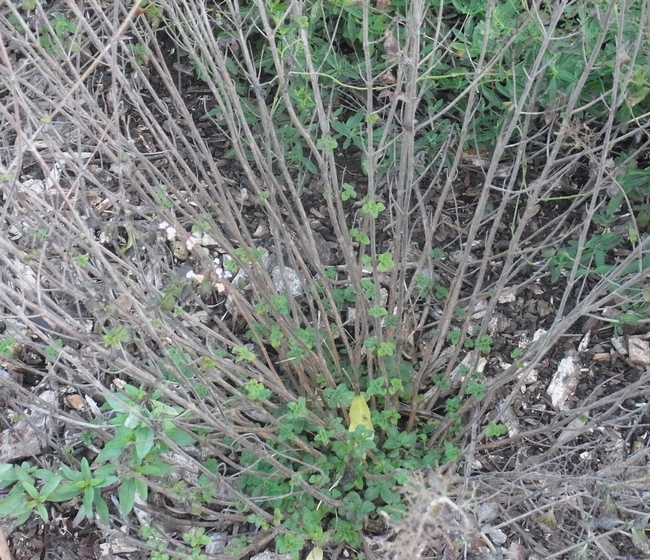
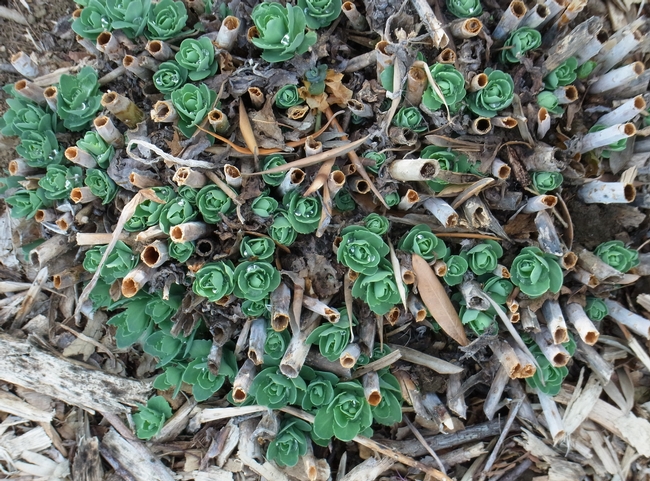
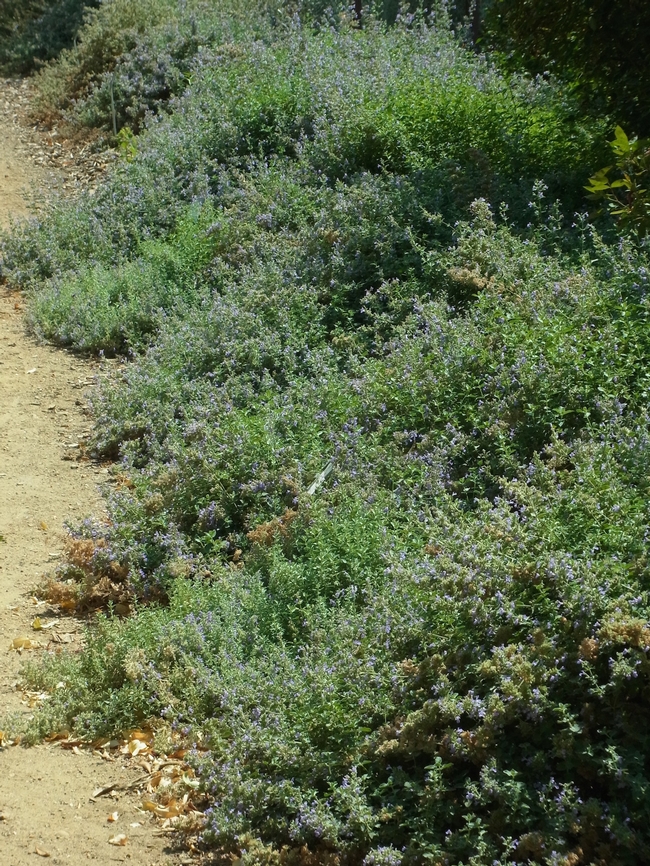
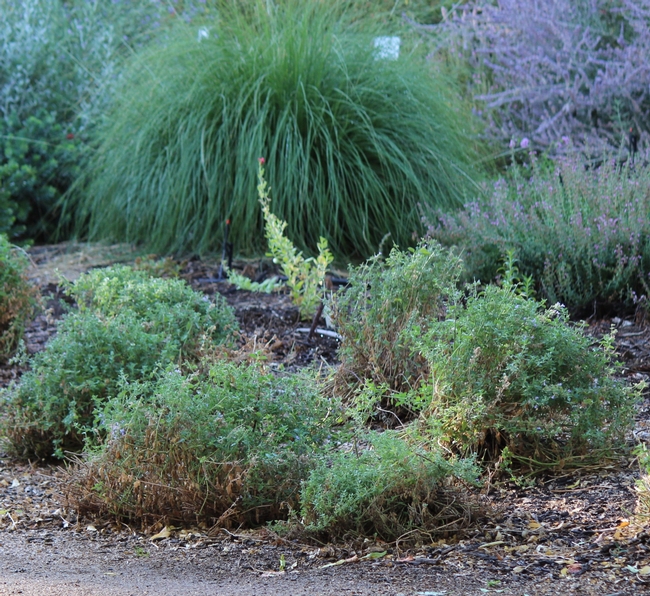
Woody perennials
Many woody perennials can be cut back hard to increase bloom. Two that are excellent candidates for this are the sages (Salvia spp.) and California fuchsia, Epilobium canum. Trim sages back to 6 to 12 inch stems to stimulate new growth at the base that will produce copious flowers from the following spring through fall.
California fuchsia is a great bee garden plant that provides nectar in late summer and fall when there are often few other nectar sources. It does tend to spread, and pruning a large patch by hand can be time-consuming. Run a lawn mower over it .... it will look terrible when you're finished but the reward will be ample flowers the next year.
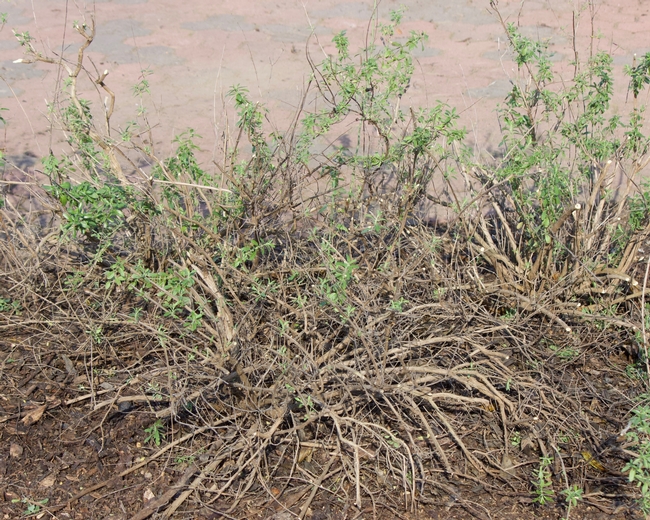
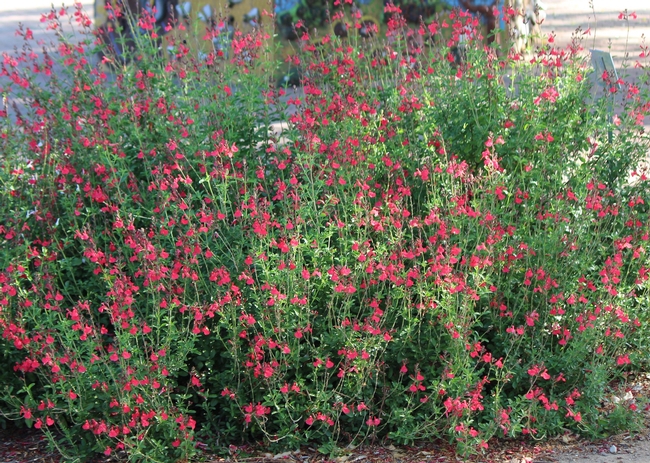
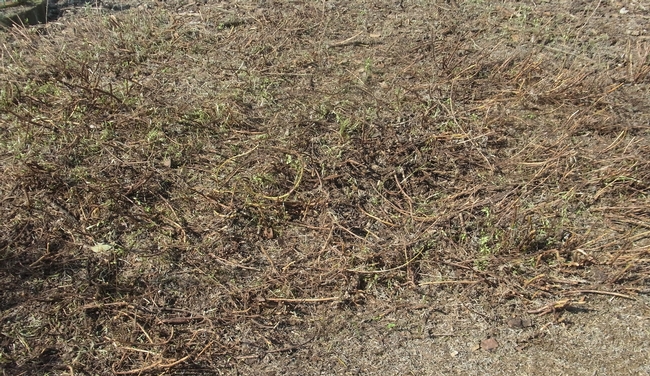
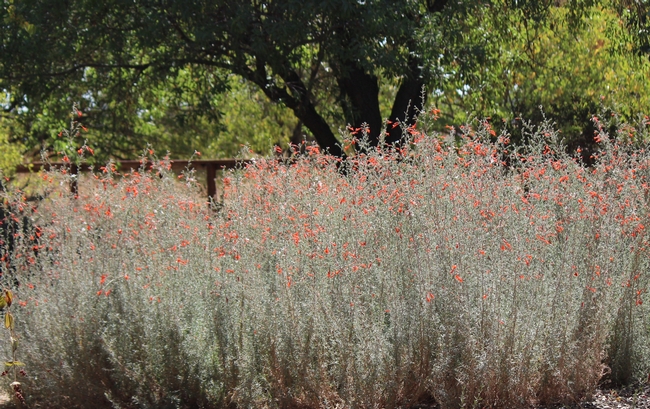
Woody shrubs that bloom on new growth
Some woody plants are pruned more like herbaceous perennials because they bloom on new growth. If they're not pruned hard there will be little in the way of flowers next year. The example here is bluebeard, Caryopteris x clandonensis; stems are trimmed to 6 to 12 inches in length just above a node where new growth is emerging. It doesn't look like much in the winter after it's pruned, but it returns beautifully once spring comes and flowers nicely all summer and fall. Another common bee garden plant that needs to be trimmed this way is Russian sage, Perovskia atriplicifolia. 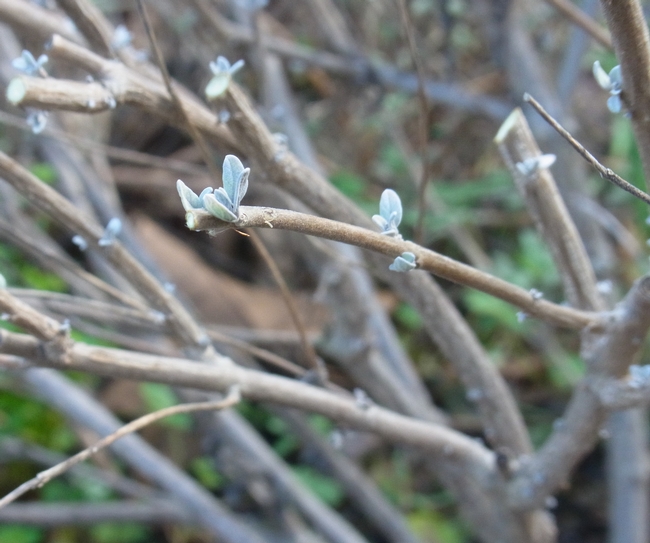
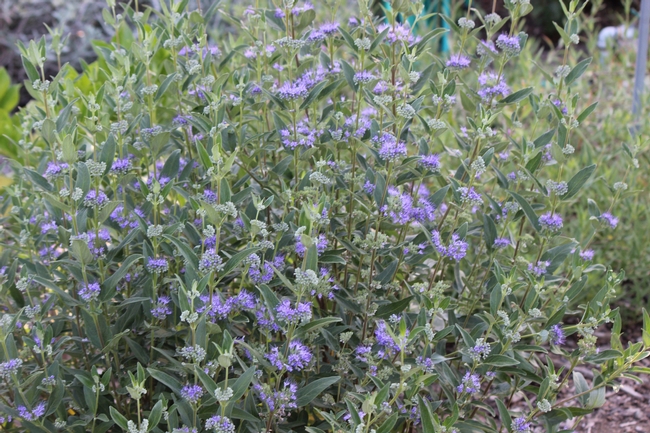
Renewal pruning
Many woody shrubs can be cut back hard for renewal. Plants that have excessive dieback or that tend to get woody and unproductive with time are great candidates for this.
The first example is 'Valley Violet' ceanothus. This plant showed quite a bit of dieback by last fall. It was pruned hard (its size was reduced by about 2/3); the first photo shows how nicely it is growing back. We won't get much bloom this year, but by next winter it will be covered with nutritious flowers for our bees.
Another candidate for this treatment is coyote brush, Baccharis pilularis; ours is the cultivar 'Twin Peaks'. Over time this plant tends to accumulate a lot of woody stems that don't produce flowers. We cut this back in the fall to the pile of sticks shown in the first photo; look at how nicely it comes back by spring.
This guide from UC Cooperative Extension has more information about tree and shrub pruning.
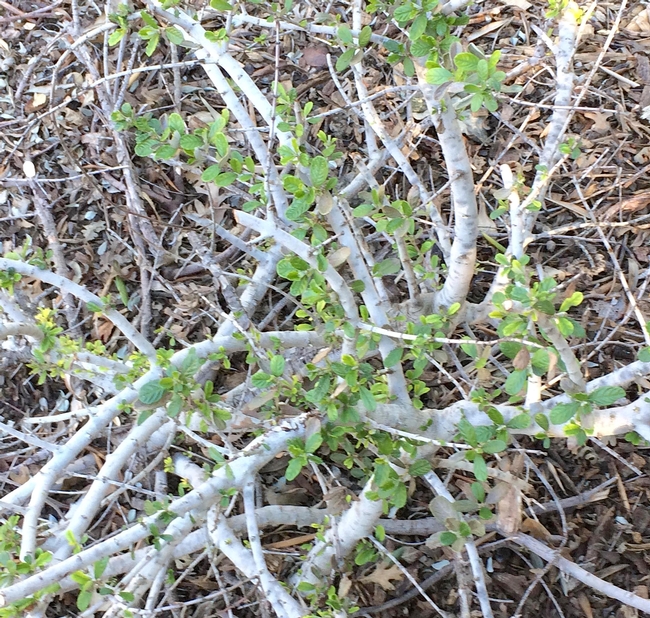
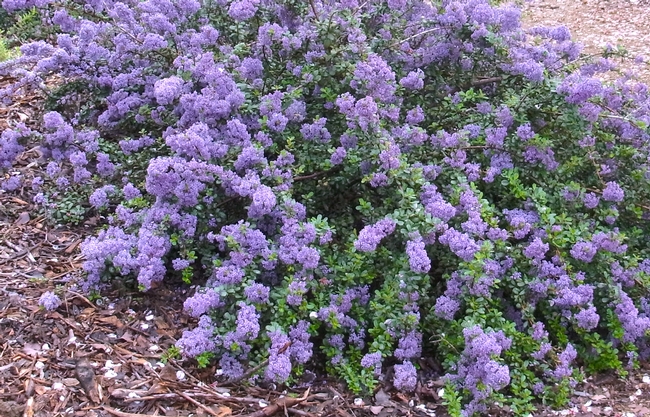
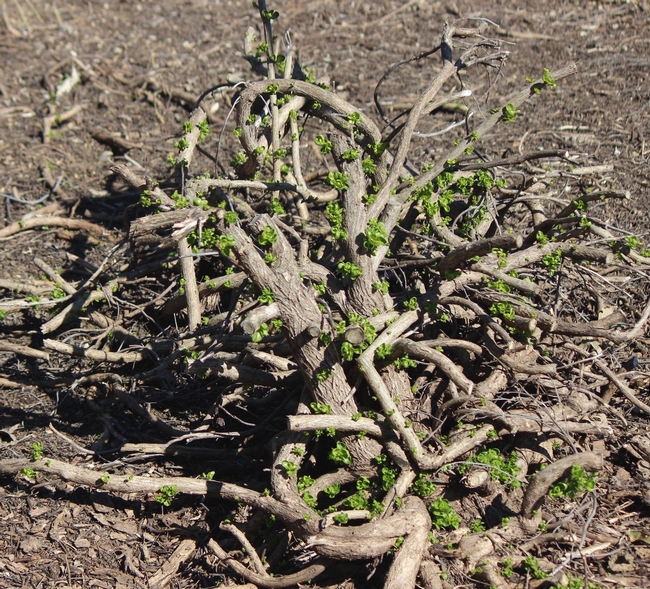
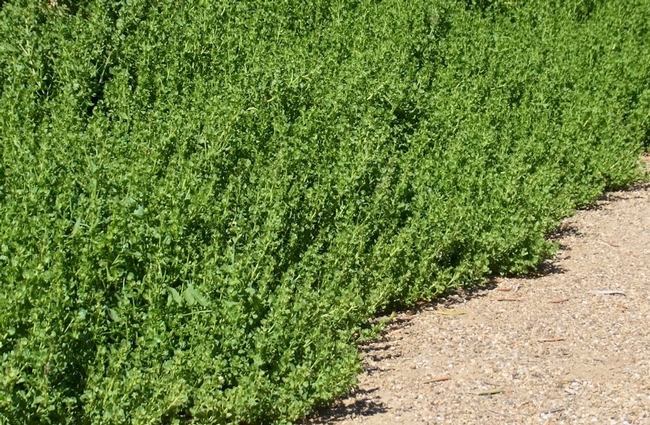
Grasses
We have native bunchgrasses in the Haven, which are sometimes used by bumble bees for nesting. They can nest at the base of the plant itself or in the ground immediately around the plant. We grow California fescue 'Phil's Silver' (Festuca californica 'Phil's Silver) and deergrass (Muhlenbergia rigens) at the Haven. Neither is pruned in late winter, but for the sake of being thorough I've included them. We prune the fescue in early summer (around the time it goes dormant) to prevent excessive re-seeding. Deergrass is pruned every other year in fall, which provides sufficient time for new growth to develop by spring. As you can see from the photos, neither is particularly attractive after it's cut back.
Pruning is not essential for maintenance of these plants, but it does provide a neater appearance in the landscape. To be safe, check for the presence of nests at the base of these plants before pruning. 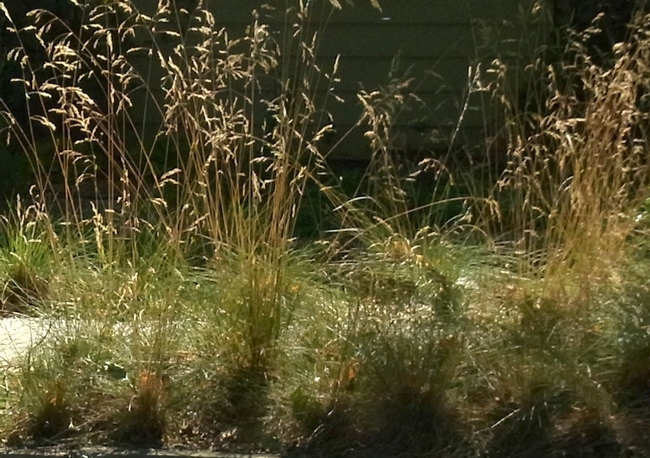
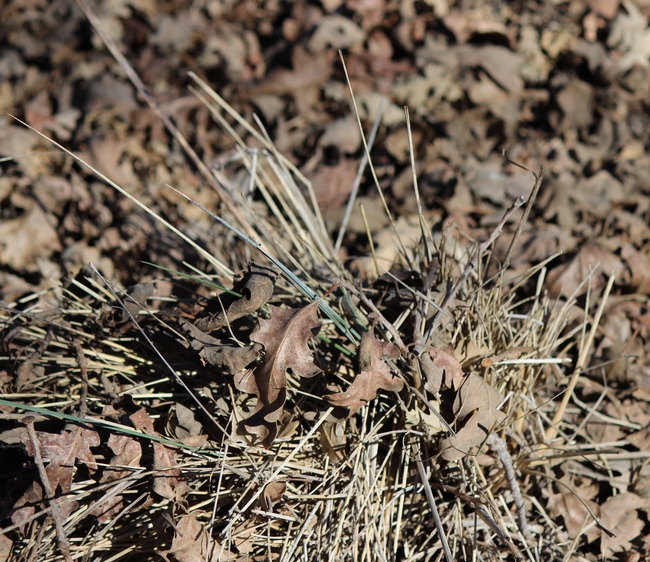
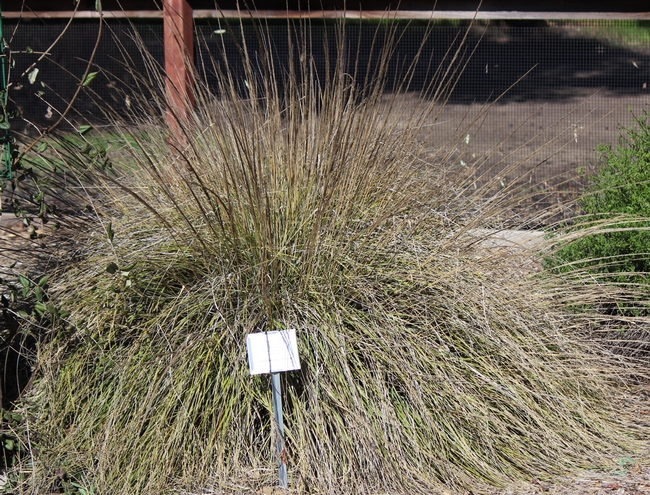
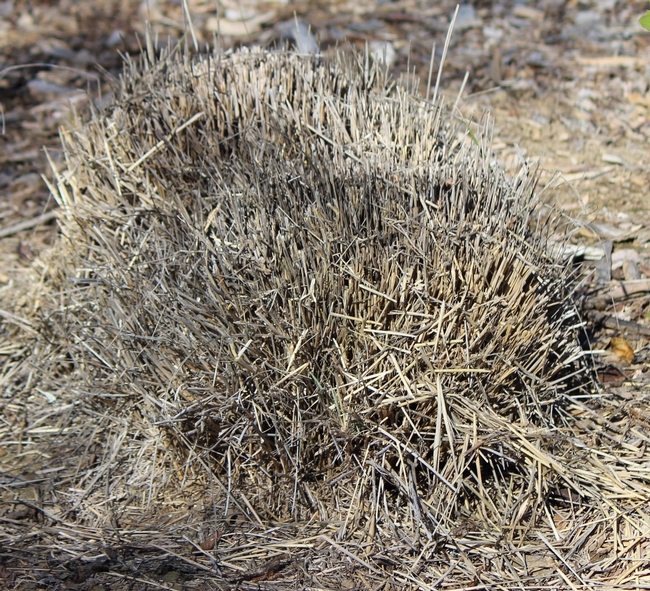
Fruit tree pruning
We also prune our orchard during the winter. This is especially important for us during the next few years as our young (planted in 2016-2017) trees develop their shape. As shown in the before and after pictures, the goal at this time is to develop a bowl shape with an open center. Prune off any branches that come out from the main trunk at very shallow or steep angles....ideally branches should be between 40 to 60 degrees off the main stem. Anything else tends to be weak and may snap under the weight of a load of fruit. For the same reason, aim for balance around the trunk: you can see that I've left three equally spaced branches at each node. I'll likely remove the lower set of branches during next year's pruning; for now their foliage provides valuable photosynthesis to help this young tree grow.
For more information about fruit tree pruning, check out this information from UC Cooperative Extension.
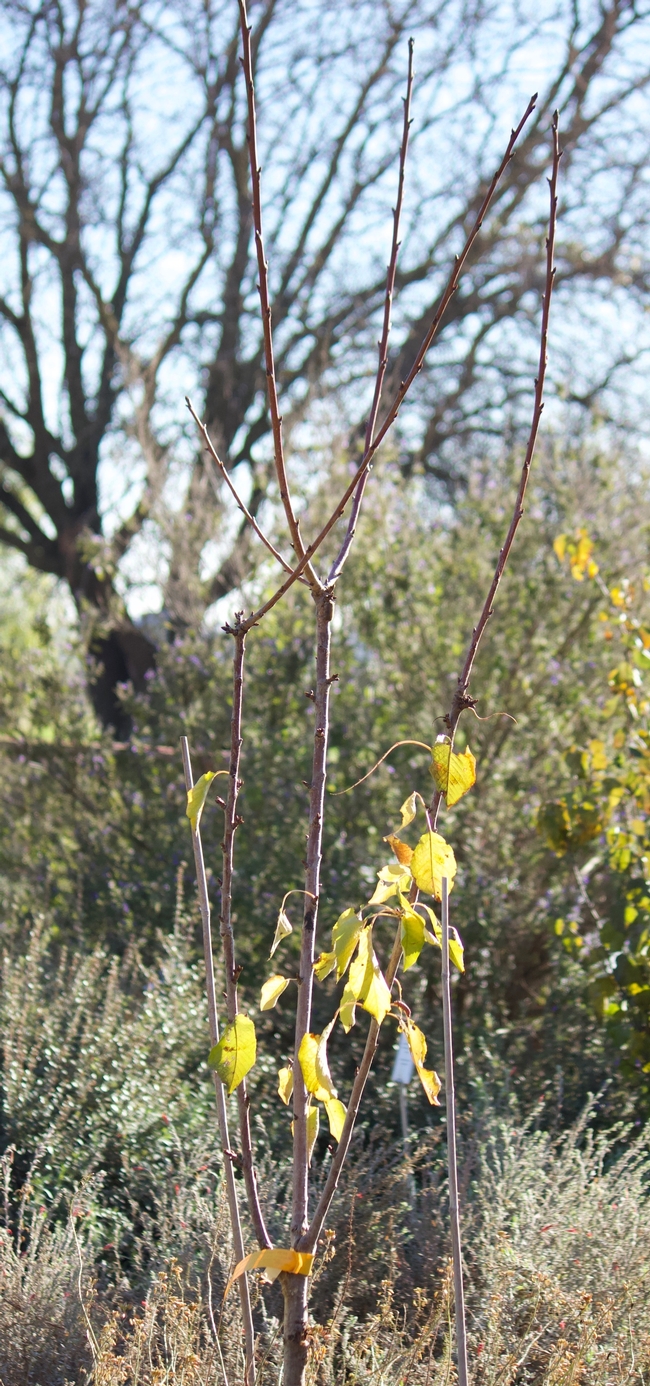
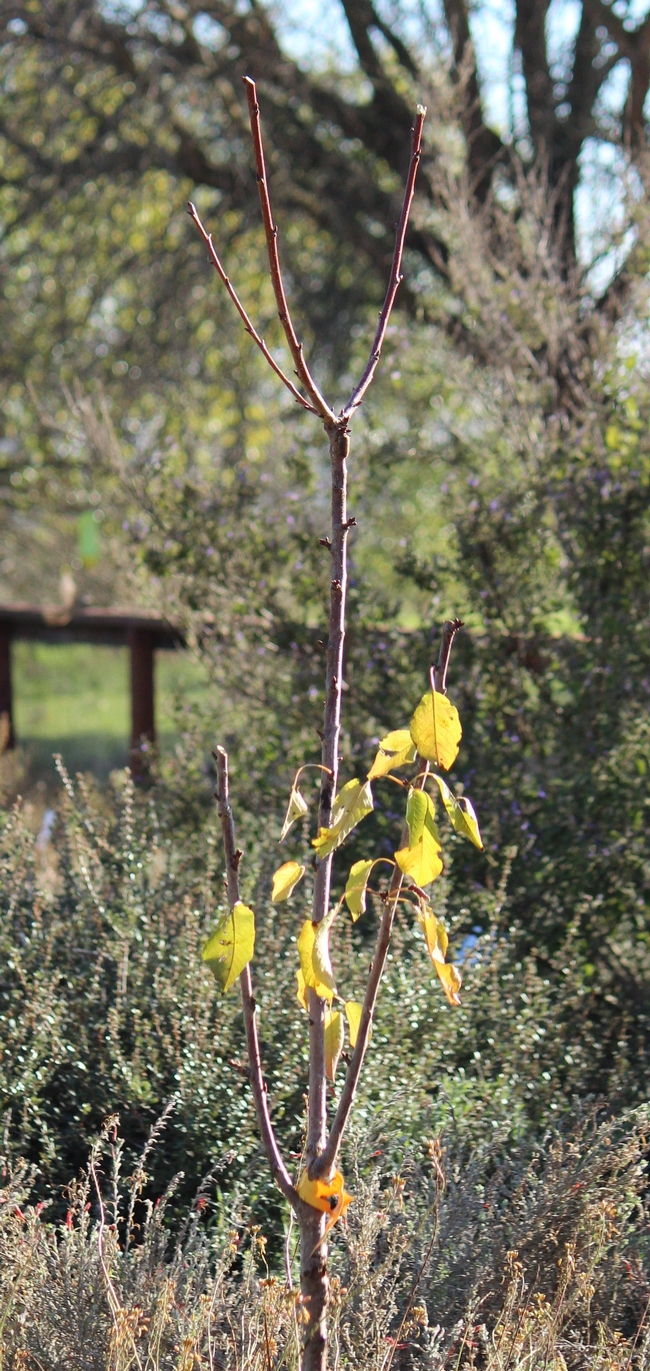
Dead branches
Dead branches should be pruned immediately, regardless of the time of year. There's also no need to use wound dressing, as correct pruning cuts are done so that regenerative tissue remains on the plant and it heals itself.
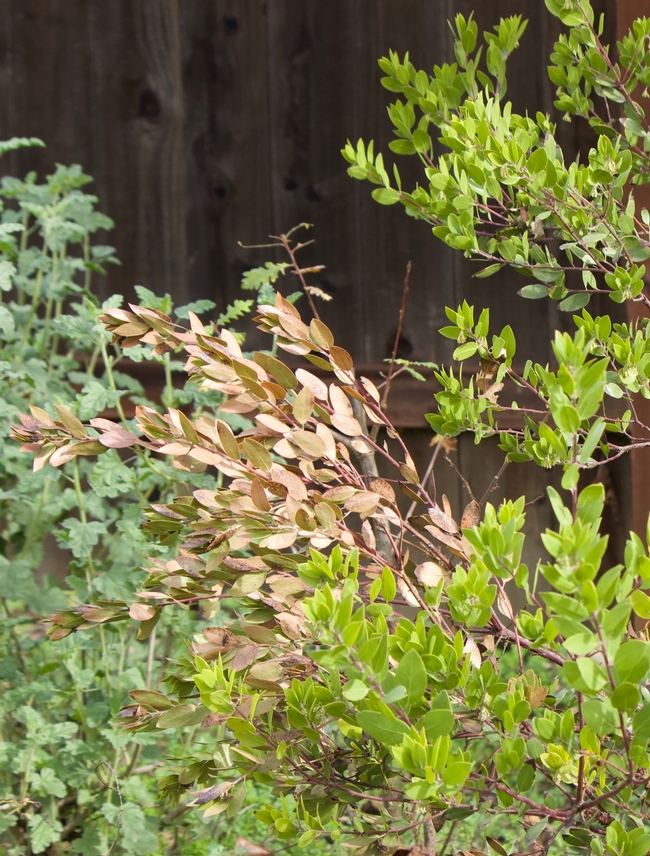
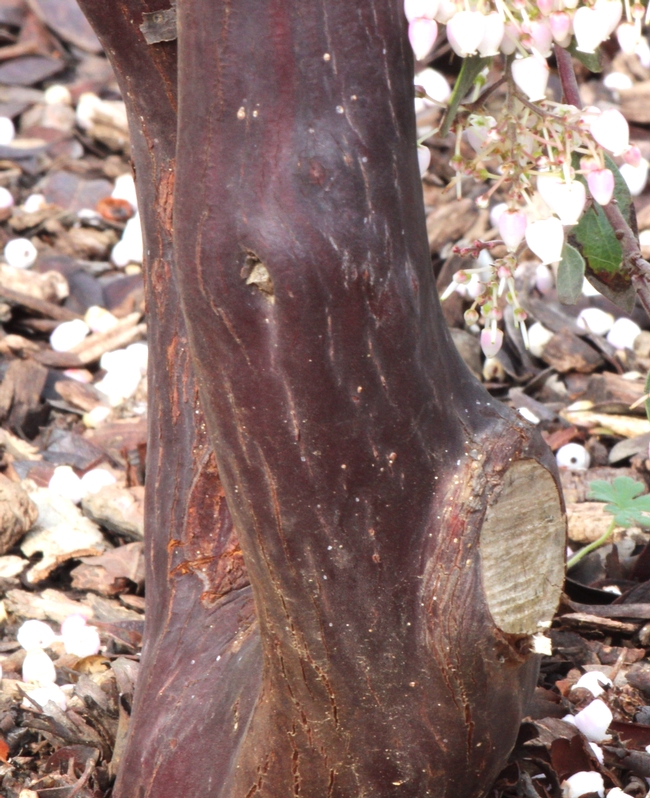
- Author: Christine Casey
An important part of the Haven's mission is providing learning opportunities for tomorrow's bee gardeners and bee scientists. Children's activities have always been a part of our open houses; I'm pleased to announce that we now have an area for adults and children to interact to learn more about bees and growing the plants that support them.
Here's a brief tour; I will continue to add new information and educational activities as time permits. I hope you can visit soon!
The area is next to the garden shed and is under shade cloth. There are both adult- and kid-sized tables. A box at the entrance contains an activity sheet for adults and children to use together as they walk in the garden.
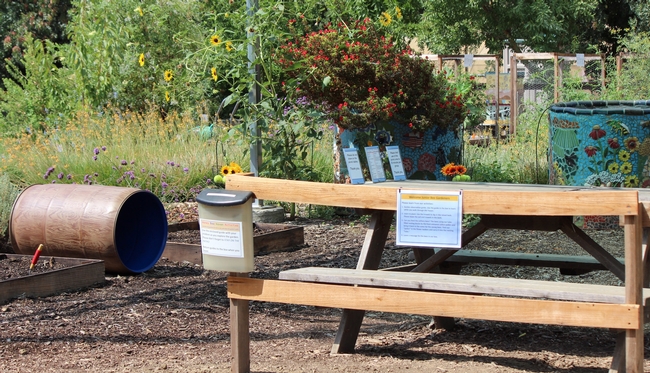
An old hive has been made into a message center:
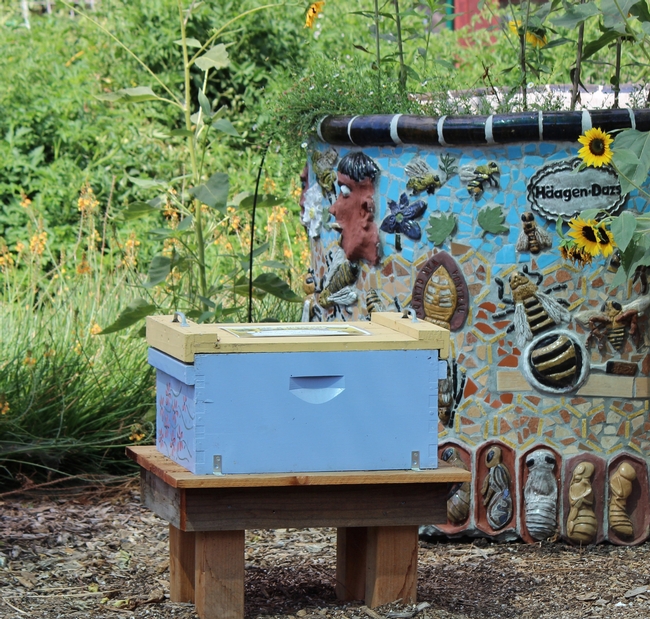
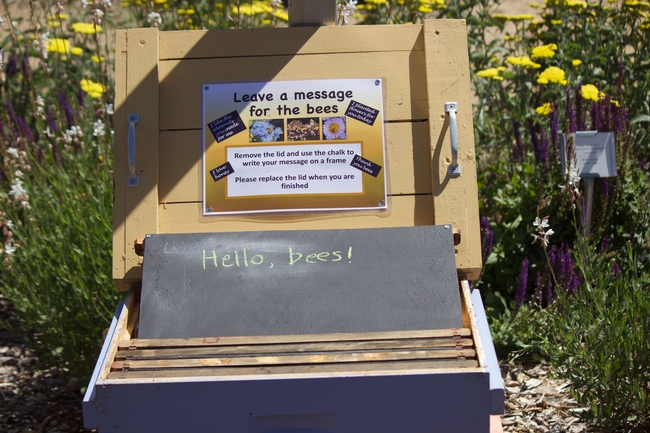
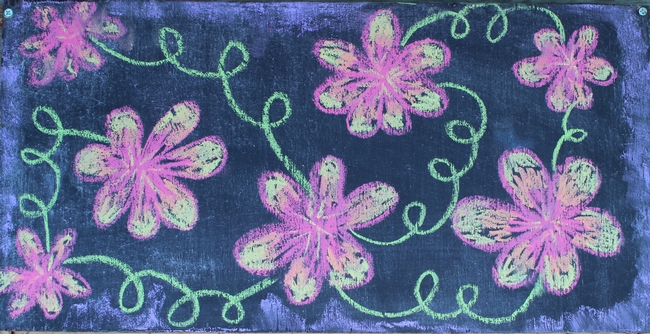
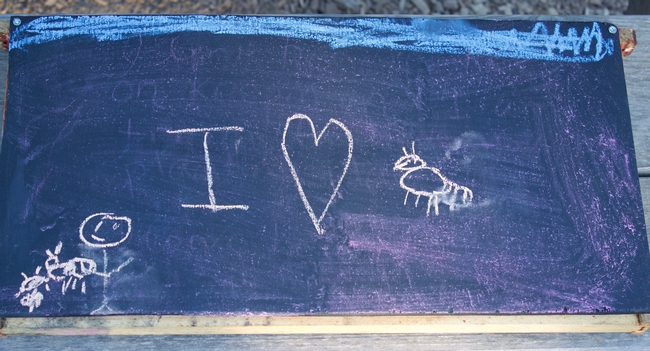
Stop and look at the activity at the solitary bee nesting blocks at the Haven entrance. Kids can then learn how these bees work by collecting "pollen" from "flowers" and depositing it in the "nest." They can also dig in the raised beds to learn how to plant for the bees.
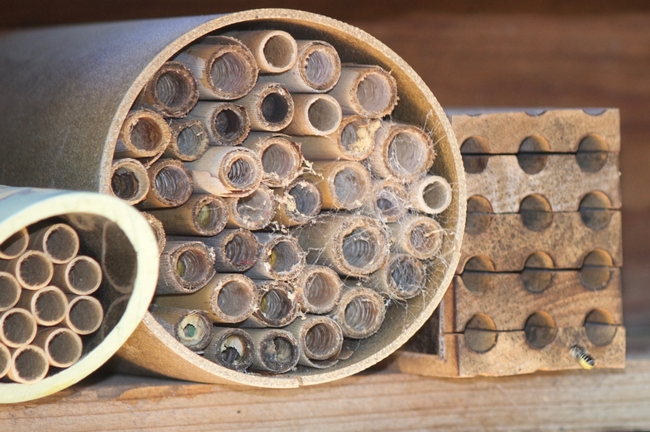
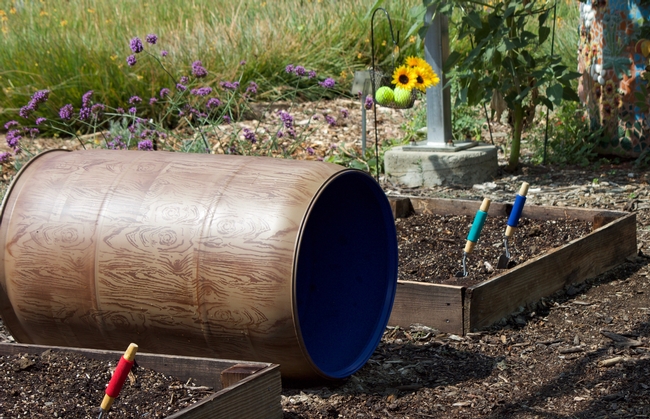
Please be mindful of our policies so that everyone can have an enjoyable visit:
Thanks to Haven volunteers Diane Kelly and Rick Williams, who did much of the construction and painting.
Update as of March 2023: the children's activities have been removed from this area as they were not being well-used by visitors.
- Author: Christine Casey
This Saturday, August 19, 2017, is National Honey Bee Day. This commemoration was created by Pennsylvania beekeepers to recognize the beekeeping industry, honey bees, and the role they play in our food supply. Let's take this opportunity to honor the hard-working honey bees (they pollinate about 85% of bee-pollinated crops in the US, which is worth billions of dollars annually).
To keep honey bees healthy, access to ample, nutritious forage, i.e. flowers, is essential. It's important to provide year-round bloom and to include both pollen and nectar sources. The Haven's web page includes the information you need to develop this in your own garden; click here to go to all of our gardening resources.
Winter-blooming plants:
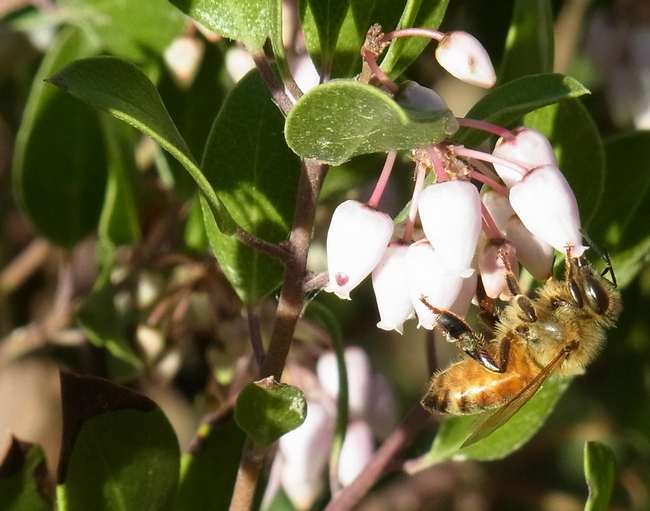
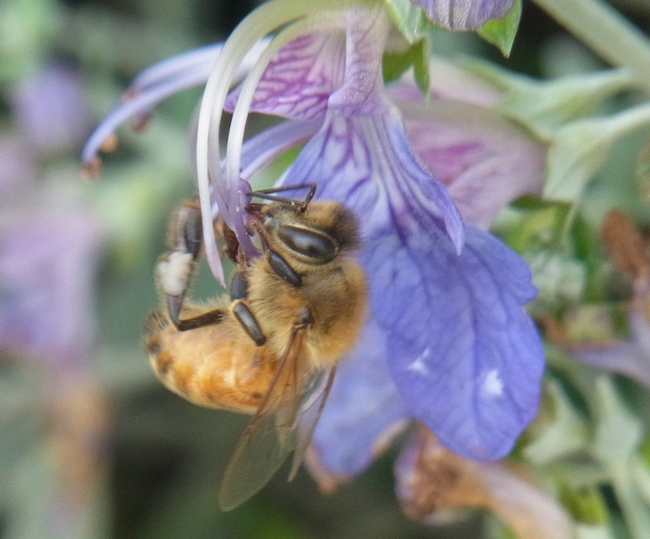
The winter food garden also depends on honey bee pollination:
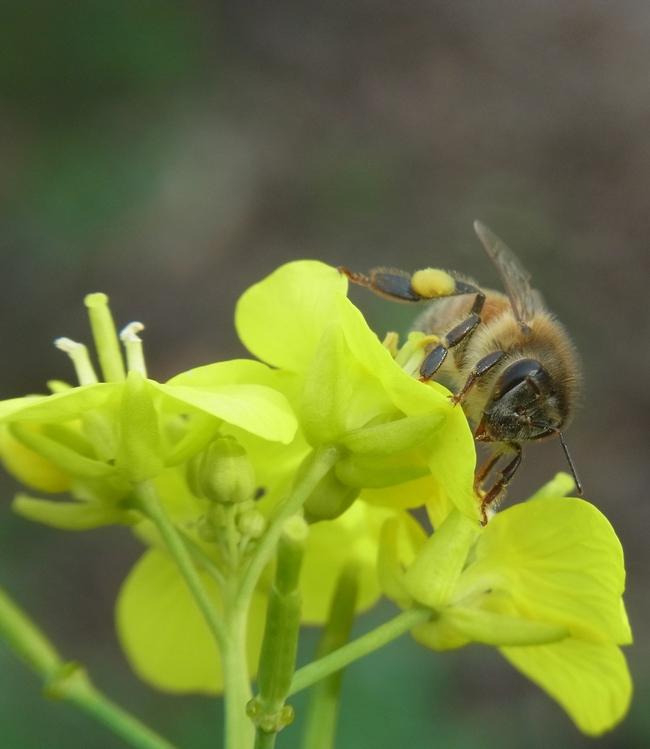
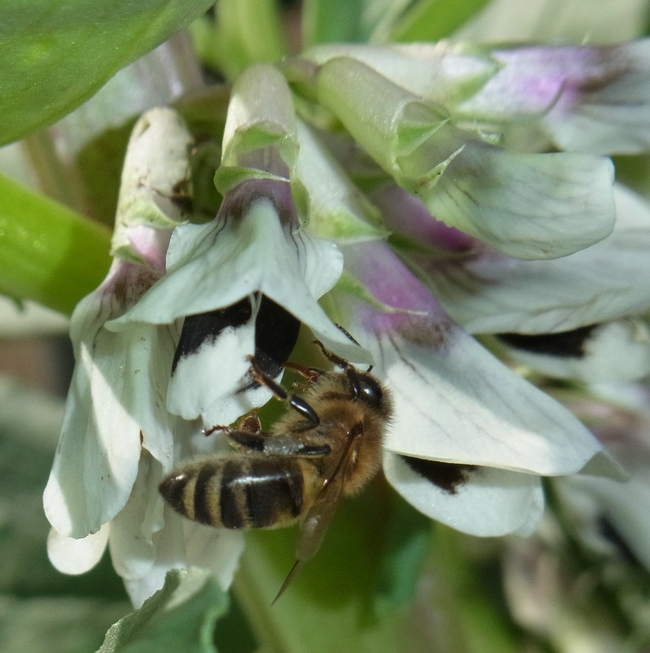
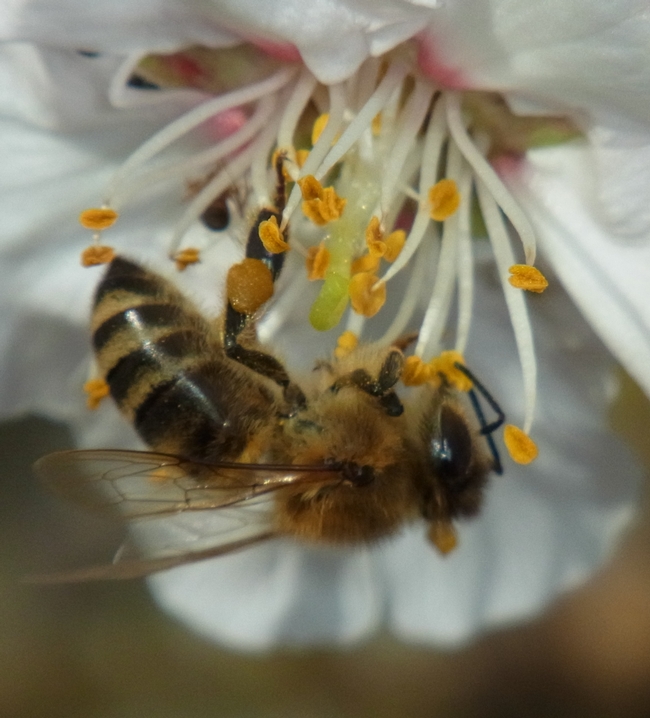
Early spring is when bees have a special need for pollen. This protein-rich plant component is fed to the young bees; an ample supply is important to building a strong colony. Early bloomers like ceanothus and California poppy are good pollen sources; March-blooming Spanish lavender provides a great nectar source that provides energy for spring foraging activity.
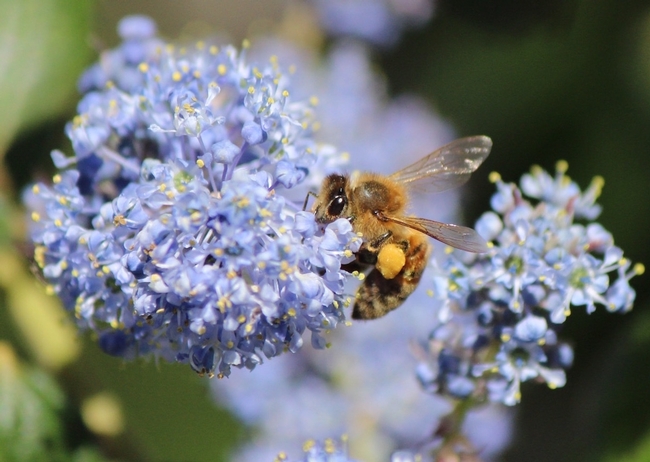
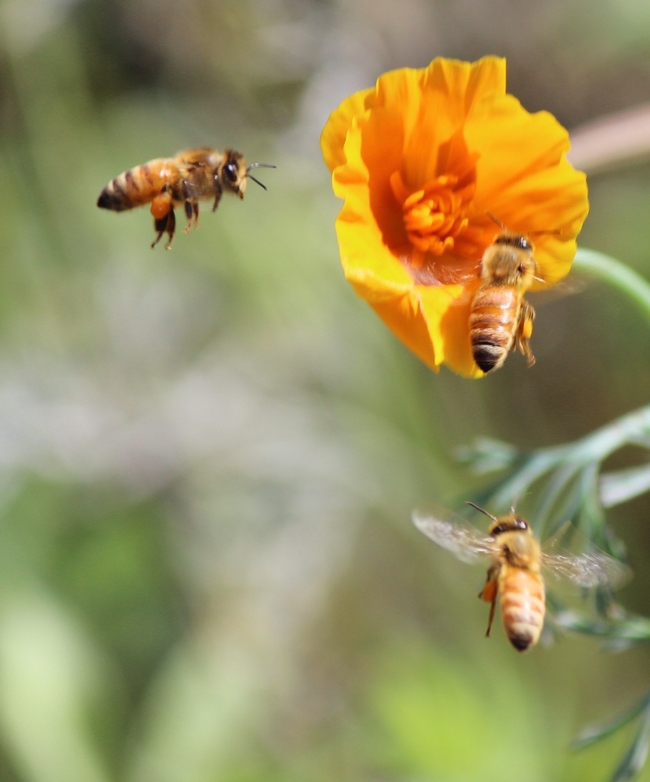
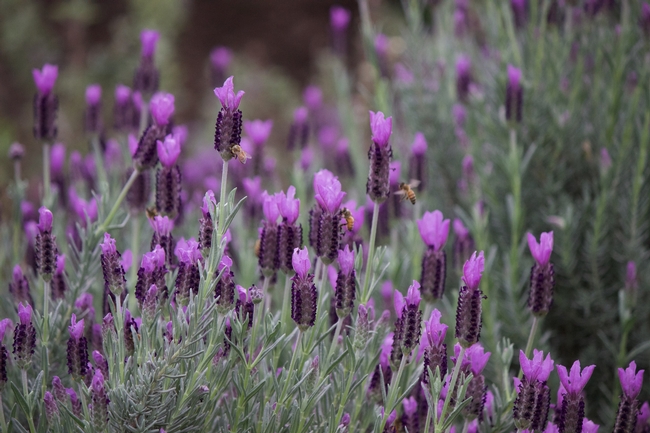
Late spring and into summer are when activity picks up in the bee garden. The hive is growing and there are bees to be fed! Here's a new bee entering the world, along with some of the pollen and nectar sources that will feed her:
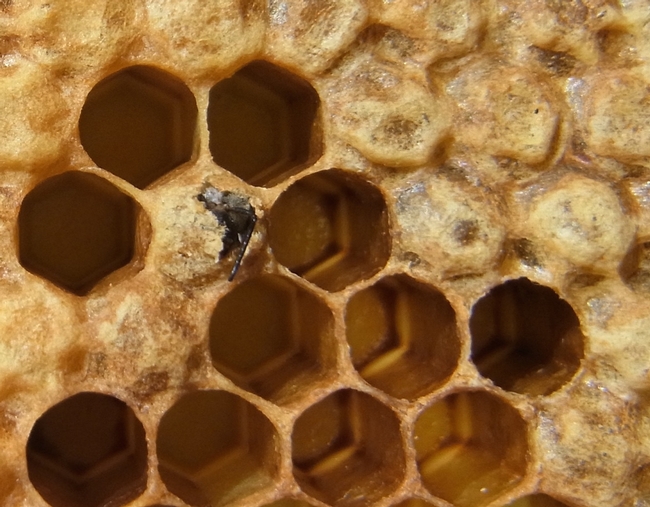
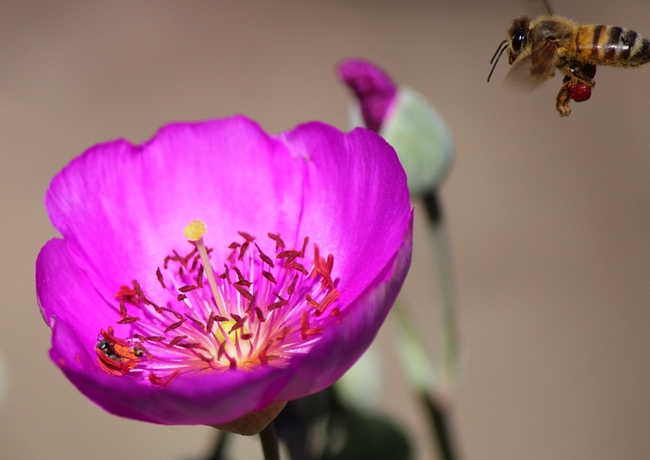
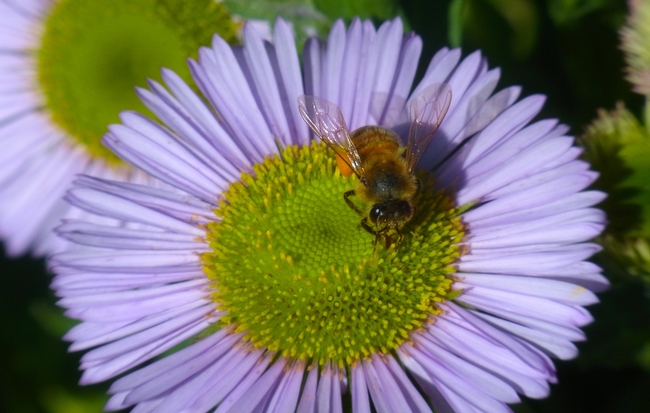
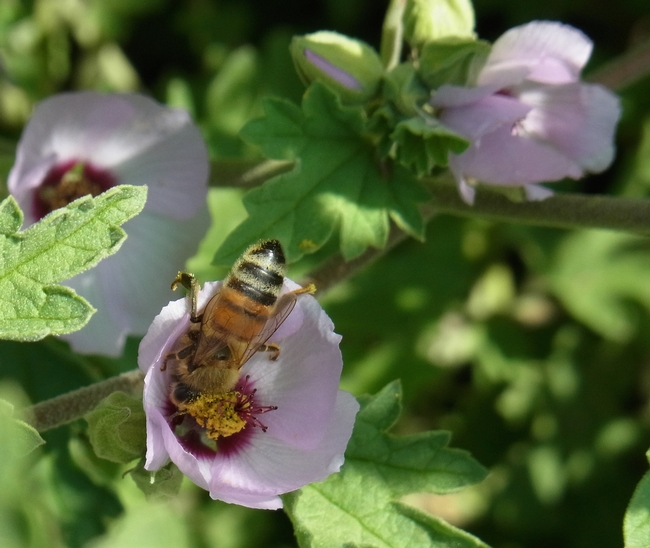
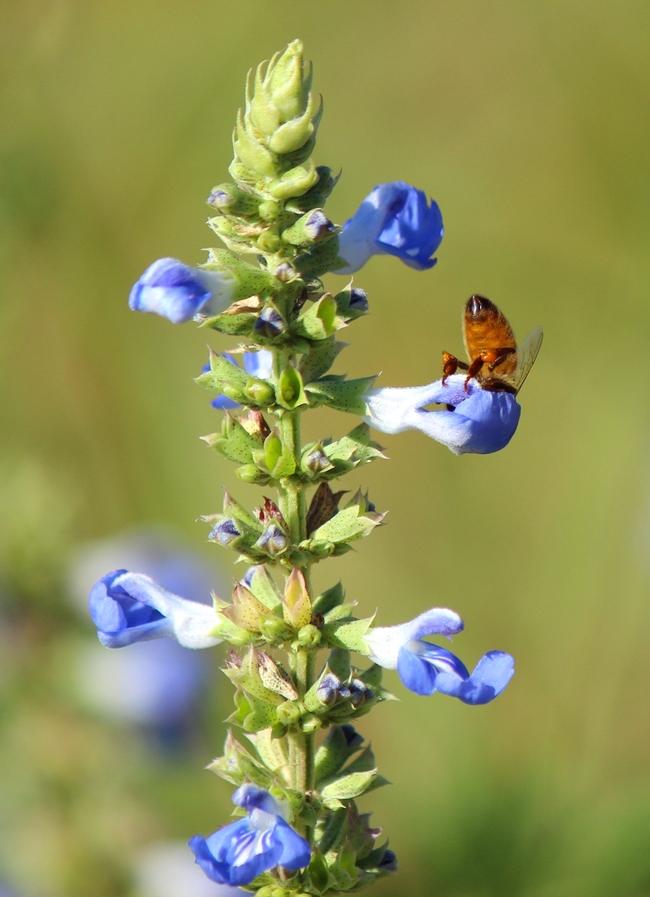
The heat of late summer often leaves gardeners heading for the air-conditioning, but not our bees...here's some plants that love the heat:
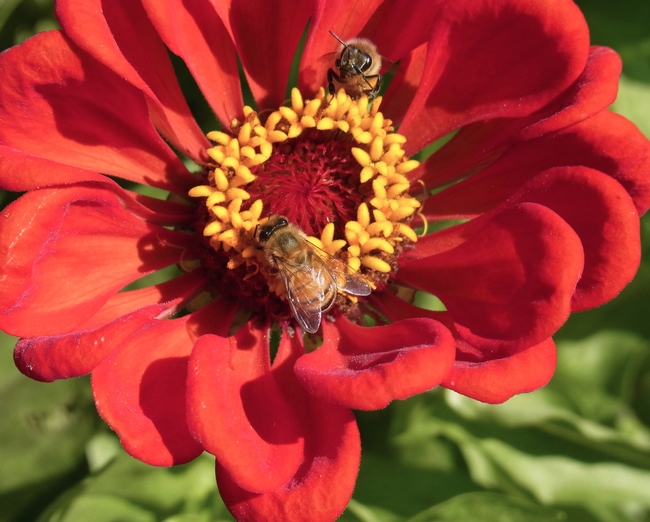
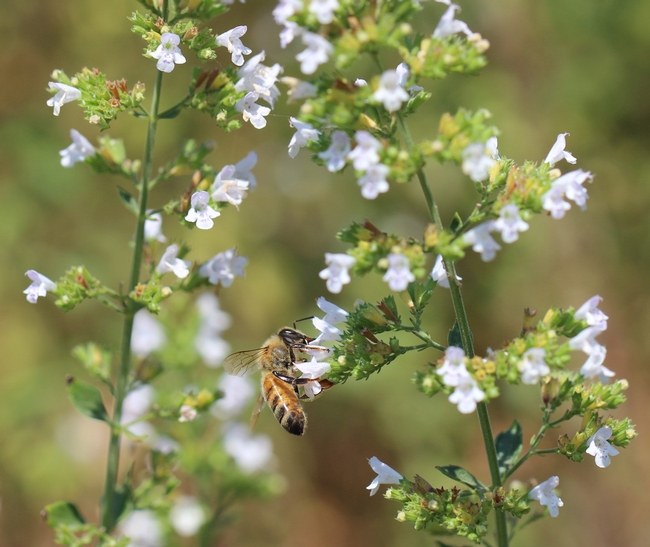
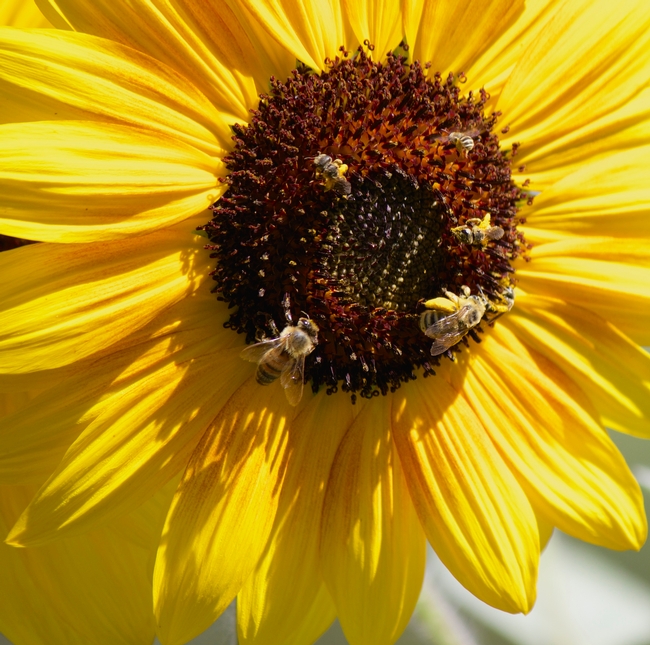
Honey bees need access to water: they don't have AC like we do, but use water to cool the hive. Here's one way to provide a water source:
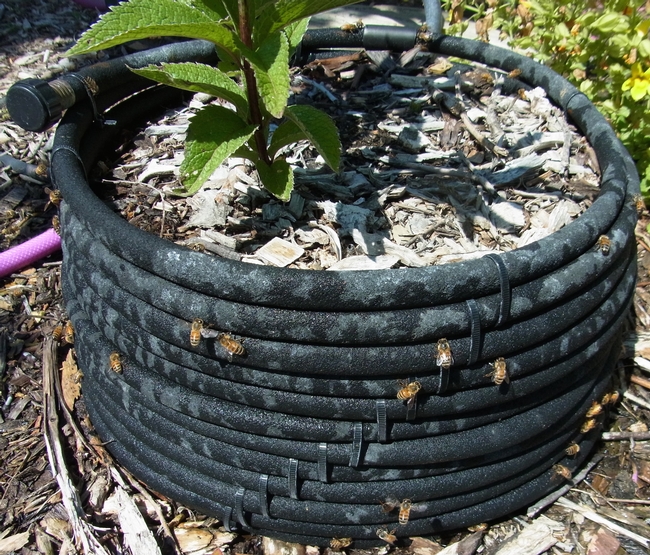
Fall bloomers are important to help honey bees put up enough honey to sustain the hive through the winter. Some good fall bloomers are shown here:
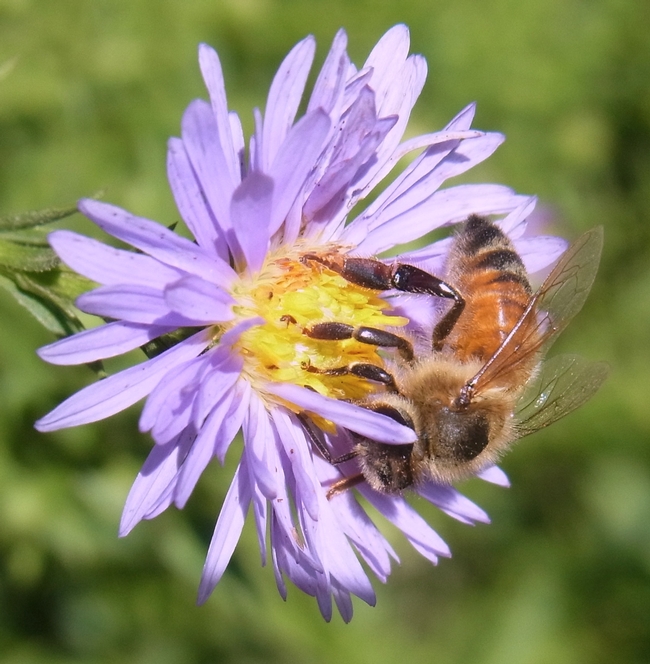
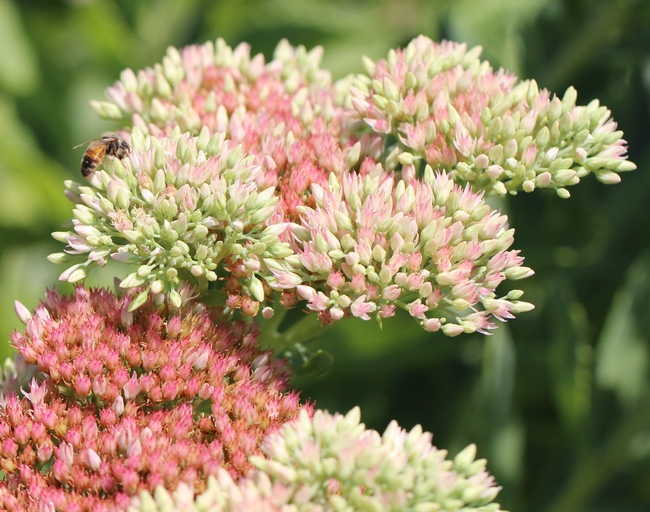
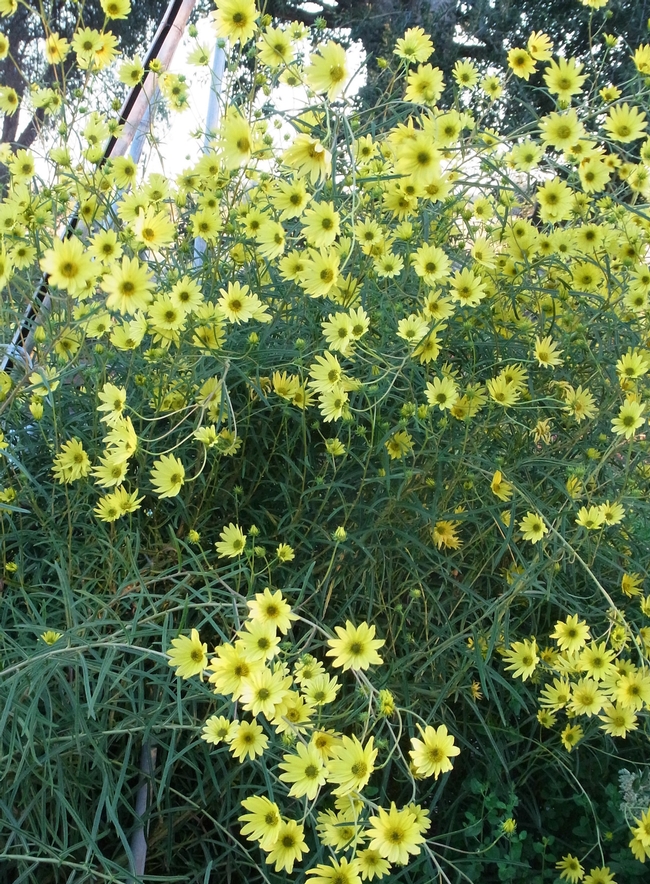
The result of all that hard work....cells being filled with honey, along with full frames of honey that have been capped by the bees for storage in the hive:
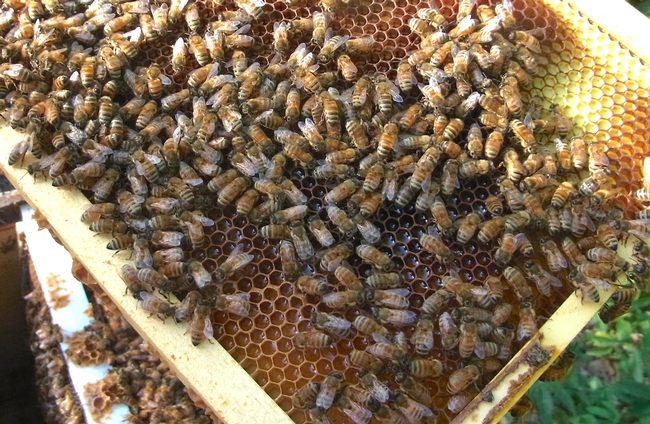
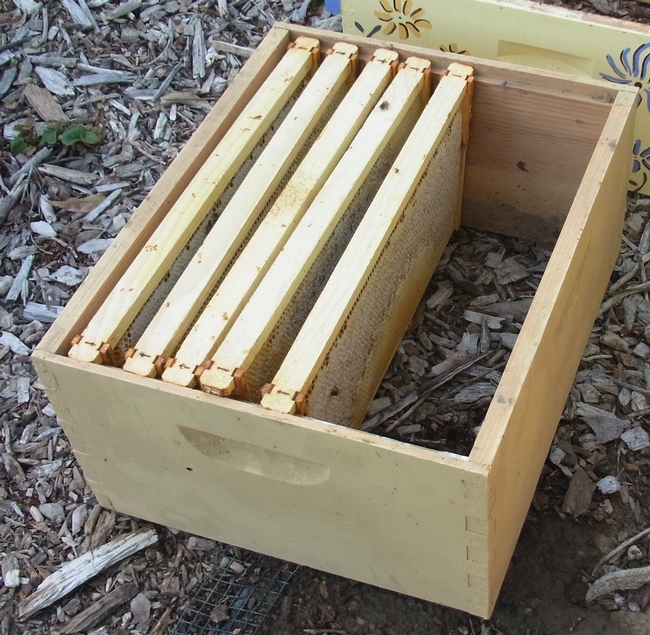
Thanks, bees, for your hard work!
- Author: Christine Casey
Winter crops are finished and our spring plantings are coming along nicely. Here's a wrap-up of what we grew this winter:
Bok choy
You'll find lots of information about this crop in a previous post. As you can see, bok choy remains fresh and ready to harvest even after it has bolted (the term used for cabbage family members that have flowered). Healthy food for us and the bees = win-win!
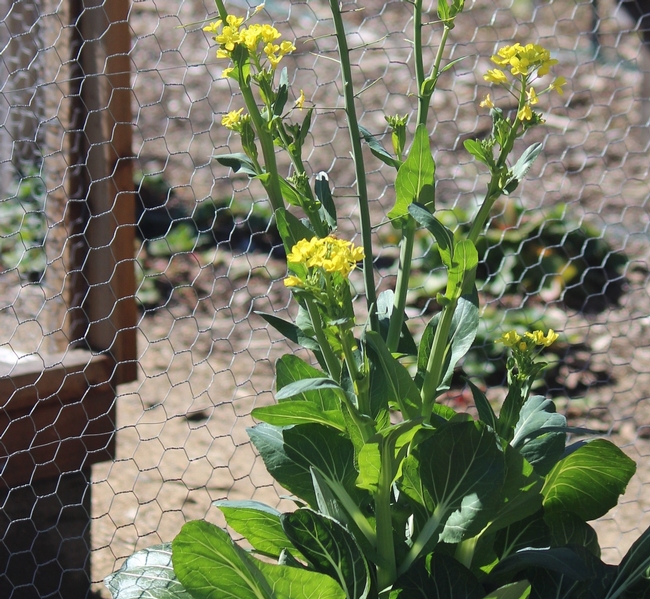
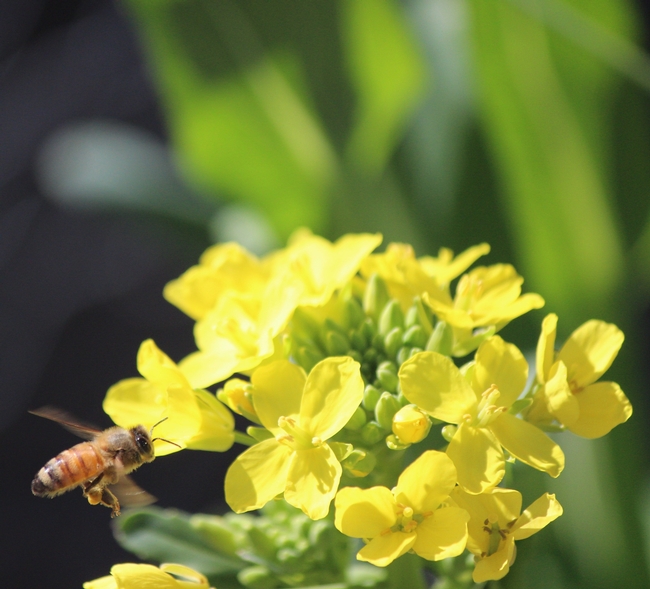
Brussels sprouts
This California specialty crop is delicious sautéed in olive oil with a bit of seasoning. Again, we let ours bolt to provide a nutritious winter pollen source for our bees. Most US production is in California and is concentrated along the coast; the cool, foggy weather there is perfect for this crop. Value in 2015 was nearly $24 million.
Brussels sprouts are high in vitamins C, K, and some B vitamins. Like other cabbage family members, they contain sulforaphane, a compound that may have anti-cancer properties. Steam or stir-fry Brussels sprouts to ensure the highest level of this chemical.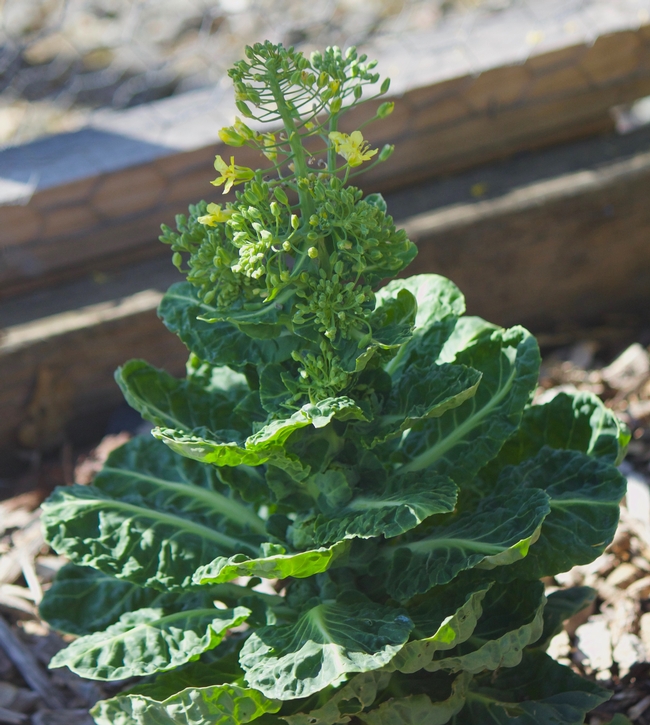
Cauliflower
Several cauliflower varieties are available for purchase at the market or for production by the home gardener. California produces most of the cauliflower consumed in the US, with production along the coast and in the Inland Empire. Crop value in 2015 was $309 million. It is very nutritious: it's a source of vitamin C, vitamin K, folate, pantothenic acid, and vitamin B6.
Here you can see one head ready for harvest and how the part we eat is actually flower buds. By growing a few extras to flower for the bees we can all have a nutritious meal! The purple variety 'Graffiti' gets its color from the plant pigment anthocyanin, which is high in antioxidants.
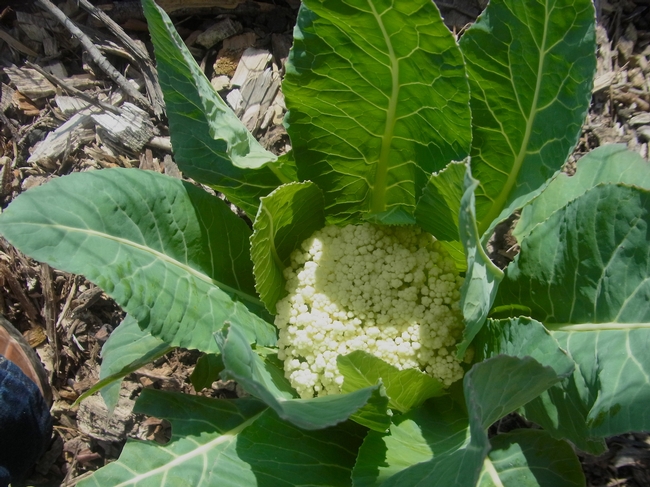
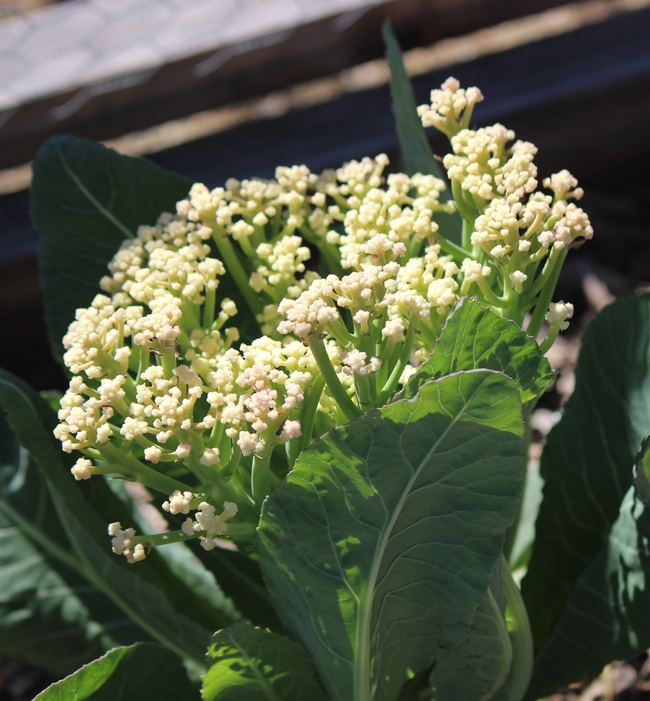
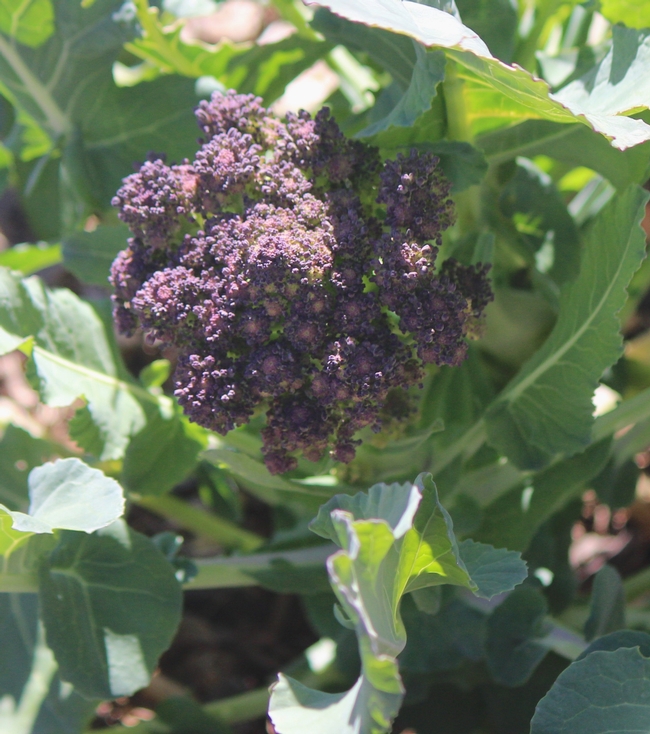
Fava bean
You'll find lots of information about this crop in a previous post. The expanding fava bean pod still has remnants of the flower attached, which shows nicely how pollination of the ovary at the base of the flower leads to development of the produce we harvest.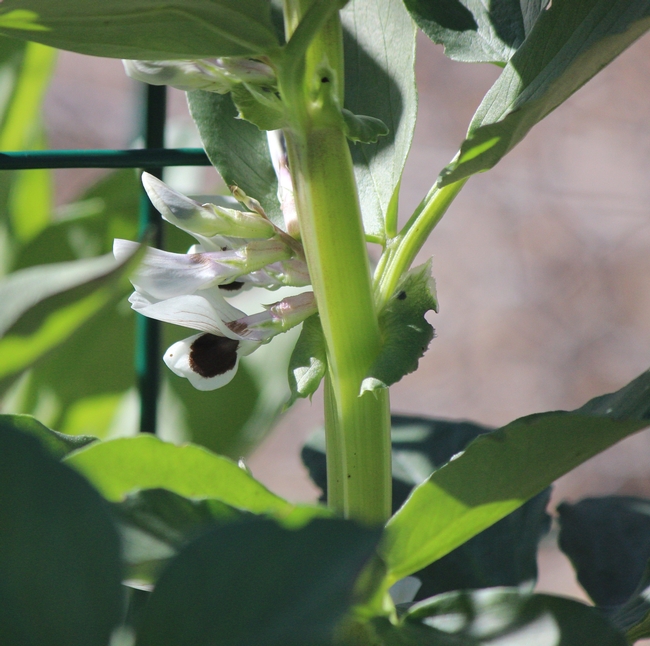
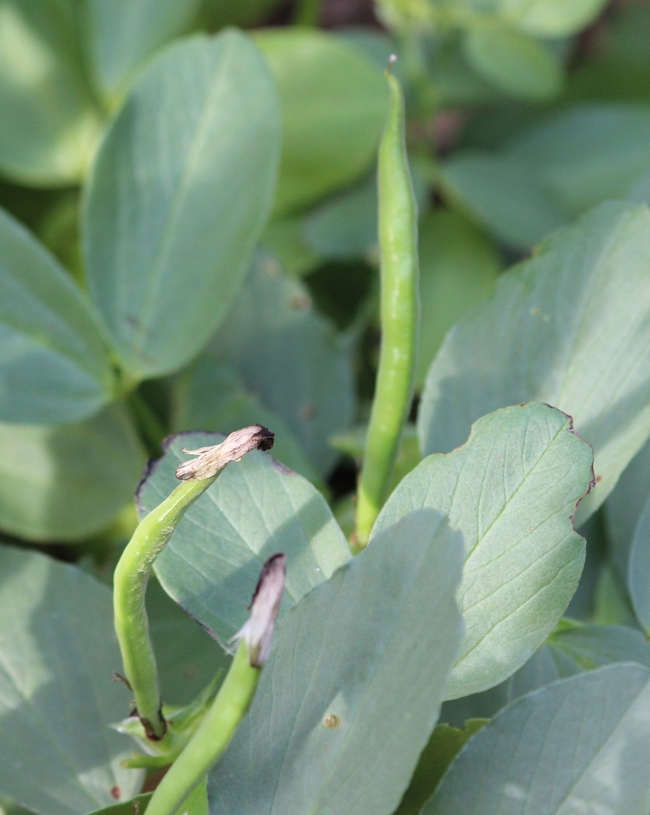
For more recipes, check out this helpful reference guide prepared by the Yolo County Department of Agriculture and funded by the California Department of Food and Agriculture.
- Author: Christine Casey
It wouldn't be spring without strawberries....or the bees that pollinate them!
California's strawberry crop was worth $1.8 billion in 2015; our state produces 88% of the US crop. Tasty and nutritious, they are high in vitamin C, potassium, iron, fiber, and antioxidants.
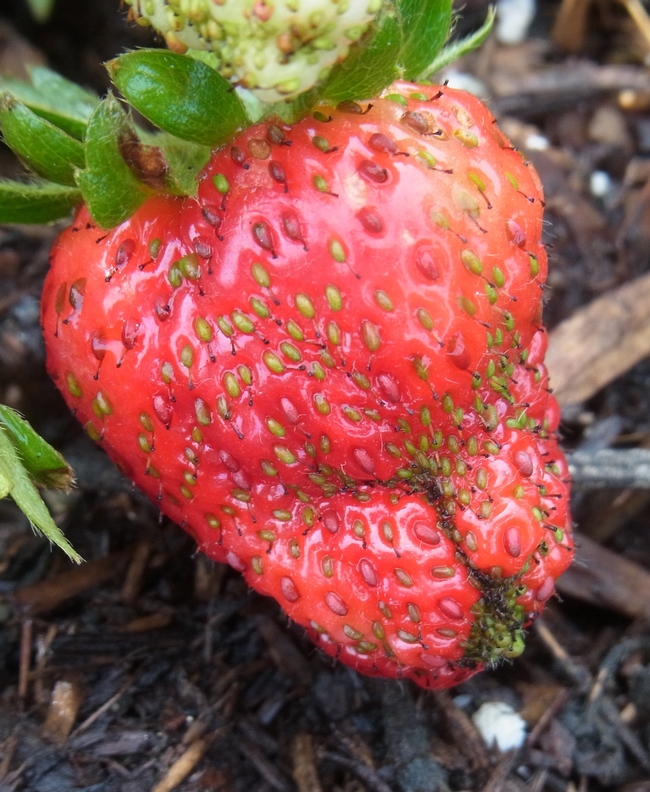
High-quality fruit takes teamwork: honey bees tend to pollinate the top of the flower, while wild bees pollinate the base. Bee pollinators of almonds include mason bees (Osmia spp.), honey bees (Apis mellifera), mining bees (Andrena spp.) and bumble bees (Bombus spp.).
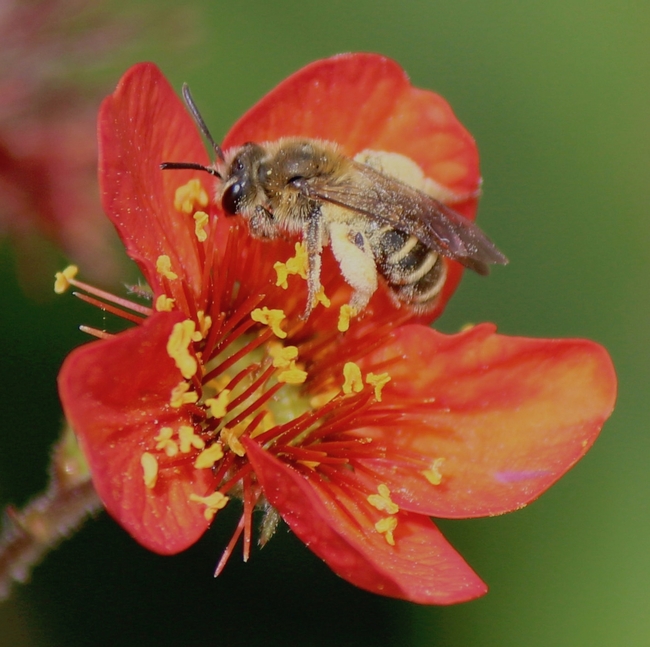
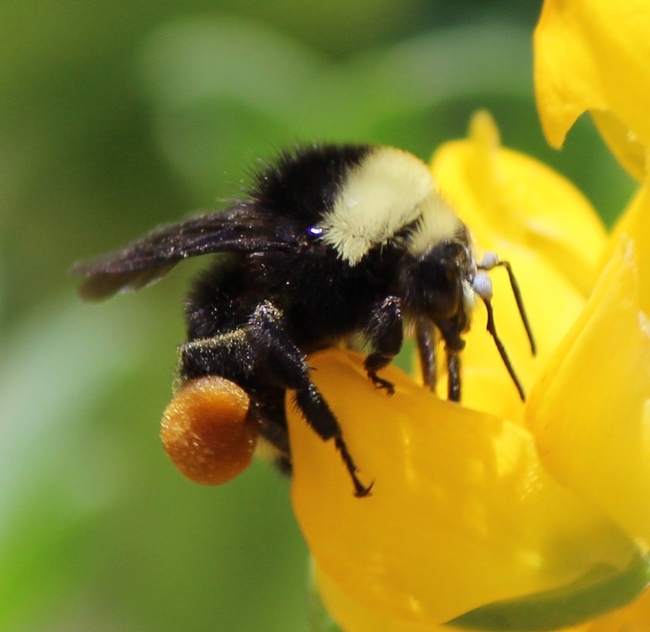
Strawberries are easy to grow at home.....want to improve pollination and yield in your home garden? In one study, planting wildflower strips next to strawberry field increased bee flower visits by 25%. An easy way to achieve this is to interplant strawberries with herbs and let the herbs flower.


